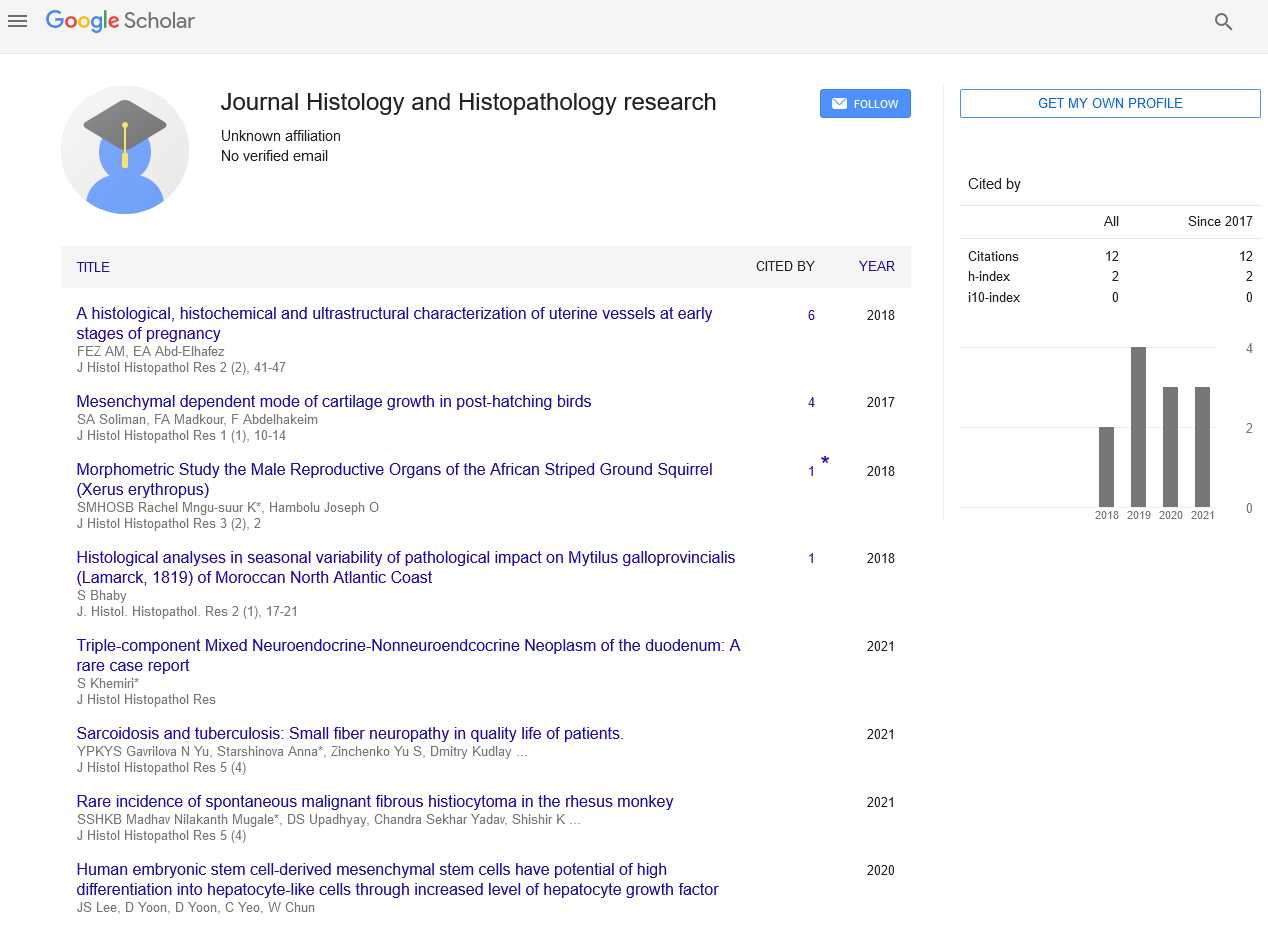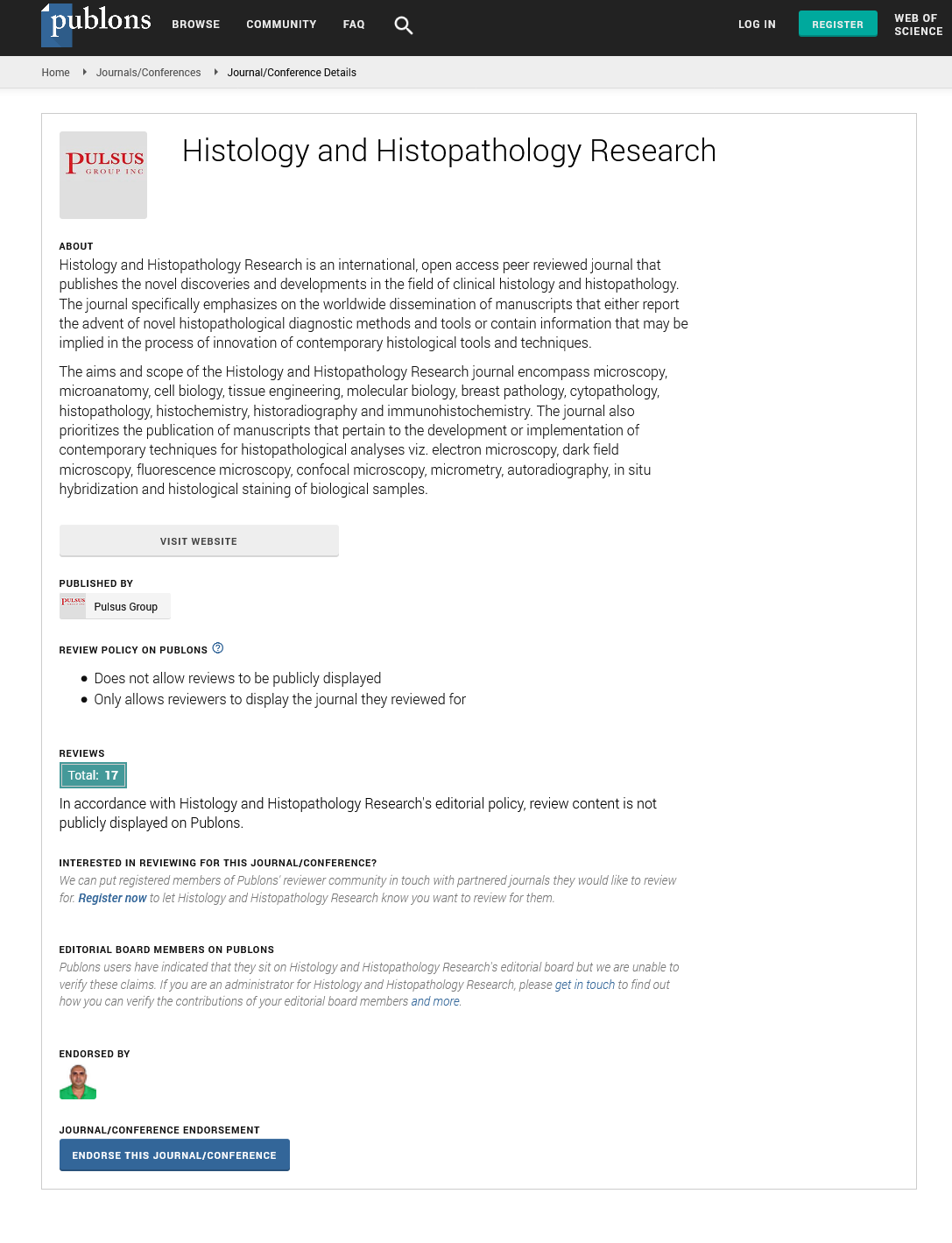A brief note on ultra-structure of nucleolus
Received: 16-Sep-2021 Accepted Date: Sep 30, 2021; Published: 07-Oct-2021
Citation: Mccoy k. A brief note on ultra-structure of nucleolus. J Histol Histopathol Res. 2021;5(3):1.
This open-access article is distributed under the terms of the Creative Commons Attribution Non-Commercial License (CC BY-NC) (http://creativecommons.org/licenses/by-nc/4.0/), which permits reuse, distribution and reproduction of the article, provided that the original work is properly cited and the reuse is restricted to noncommercial purposes. For commercial reuse, contact reprints@pulsus.com
Editorial Note
The nucleolus is the largest structure in eukaryotic cells' genomes. It is most recognised for being the birthplace of ribosomes. Nucleoli are also involved in the creation of signal recognition particles and in the cell's stress response. Proteins, DNA, and RNA combine to form nucleoli, which develop around certain chromosomal areas known as nucleolar organising regions. Nucleoli dysfunction can cause a variety of human diseases known as "nucleolopathies," and the nucleolus is being examined as a cancer chemotherapy target.
The fibrillar component (FC), the dense fibrillar component (DFC), and the granular component are the three major components of the nucleolus (GC). The FC is where rDNA transcription takes place. The protein fibrillarin is present in the DFC and plays an important role in rRNA processing.
However, it has been suggested that this system is exclusively observed in higher eukaryotes and that it originated from a bipartite structure as an amniotes evolved into amniotes. An original fibrillar component would have separated into the FC and the DFC due to the increase in the DNA intergenic region. Another structure found in many nucleoli (especially in plants) is a nucleolar vacuole, which is a clear space in the base of the structure. In contrast to human and animal cell nucleoli, plant nucleoli have been shown to have extremely high iron concentrations. An original fibrillar component would have separated into the FC and the DFC due to the increase in the DNA intergenic region. Another structure found in many nucleoli (especially in plants) is a nucleolar vacuole, which is a clear space in the base of the structure. In contrast to human and animal cell nucleoli, plant nucleoli have been shown to have extremely high iron concentrations.
An electron microscope can expose the nucleolus' ultrastructure, whereas fluorescent protein tagging and fluorescent recovery after photobleaching can reveal its structure and dynamics (FRAP). In immunofluorescence experiments, antibodies against the PAF49 protein can be employed as a nucleolus marker.
A diploid human cell contains ten nucleolus organizing regions (NORs) and may have more nucleoli. In most nucleolus, numerous NORs are activated. Two of the three eukaryotic RNA polymerases (pol I and III) are required for ribosome synthesis, and that they must operate together. RNA polymerase I transcribes the rRNA genes as a single unit within the nucleolus in the first stage. Several pol I-associated proteins and DNA-specific trans-acting factors are required for this transcription to take place. The most essential ones in yeast are UAF (upstream activating factor), TBP (TATA-box binding protein), and core binding factor (CBF), which attach to promoter elements and form the preinitiation complex (PIC), which is then identified by RNA pol.
The Nucleolus Organiser Region (NOR) and is transcribed by RNA pol III in the nucleoplasm before entering the nucleolus to assist in ribosome assembly. This assembly includes not just rRNA but also ribosomal proteins. The genes encoding these r-proteins are transcribed in the nucleoplasm by pol II via a "typical" protein synthesis route (transcription, premRNA processing, nuclear export of mature mRNA and translation on cytoplasmic ribosomes). After then, the mature r-proteins are imported into the nucleus and finally the nucleolus.
Two of the three eukaryotic RNA polymerases (pol I and III) are required for ribosome synthesis, and they must work simultaneously. RNA polymerase I transcribes the rRNA genes as a single unit within the nucleolus in the first stage. Several pol Iassociated proteins and DNA-specific trans-acting factors are required for this transcription to take place. The most important ones in yeast are UAF (upstream activating factor), TBP (TATA-box binding protein), and core binding factor (CBF), which attach to promoter sites and form the preinitiation complex (PIC), which is then recognised by RNA pol.






